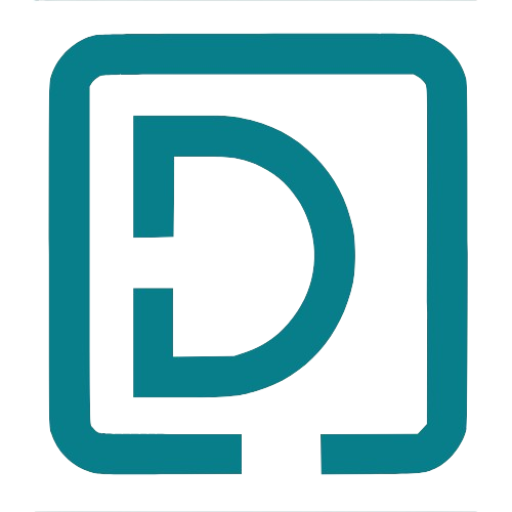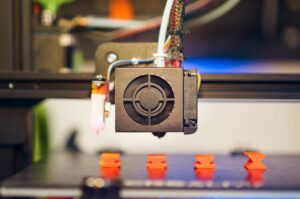Imagine walking into a local farmer’s market and seeing a unique booth. A young entrepreneur is behind a table with customized planter pots. Each pot is uniquely designed and printed with bright colors.
The creator talks about how this small business started. It was born from a love for gardening and an early investment in 3D printing. This shows the huge potential of starting a business with 3D printing. The 3D printing market is expected to hit $34.9 billion by 2024, making it a great time to explore 3D printing business ideas.
To start a small business in this field, you need more than just a good idea. You must understand the technology, find your target market, and think about different uses for 3D printing. Options range from custom gifts to industry prototypes, so finding your niche is key. With the right advice and creativity, your 3D printing business can grow. Let’s look at the basics you need to start this journey.
Key Takeaways
- The 3D printing market is rapidly growing, offering diverse opportunities for new businesses.
- Understanding the technology is crucial for successful implementation.
- Identifying a niche will help differentiate your business in a competitive marketplace.
- Creative 3D printing business ideas can cater to various industries and consumer needs.
- Planning and budgeting are essential for launching your small business effectively.
Understanding 3D Printing Basics
3D printing is a big step forward in making things. It changes how we design and make objects. It works by adding layers of material based on digital designs. This method is used in many fields.
What is 3D Printing?
3D printing, also known as additive manufacturing, makes three-dimensional objects. It builds things by layering materials from digital plans. This method is great for making prototypes and custom items because it’s flexible and saves materials.
Key Technologies in 3D Printing
There are several main technologies in 3D printing, each with its own features:
| Technology | Process | Advantages |
|---|---|---|
| Fused Deposition Modeling (FDM) | Melting filaments to build layers | Cost-effective, widely accessible |
| Stereolithography (SLA) | Using UV light to harden resin | High precision, smooth surface finish |
| Selective Laser Sintering (SLS) | Using lasers to fuse powdered material | Complex geometries, robust parts |
Applications of 3D Printing in Business
Businesses are using 3D printing in new ways. In healthcare, it makes custom prosthetics and implants. The car industry uses it for part prototypes. Aerospace companies make lightweight parts that save fuel.
Companies like Stratasys and 3D Systems are leading the way. They help push what’s possible with 3D printing.

Identifying Your Niche in the Market
Finding the right niche in the 3D printing world can lead to success. It’s important to research what people want and look at what others are doing. This helps you find a spot in this changing field.
Researching Consumer Demand
It’s key to know what people want. Use tools like Google Trends to see what’s popular. Surveys can also give you direct feedback. This helps you find ideas that people will like.
Analyzing Competitors
Looking at what others do in 3D printing helps you understand the market. Check their products, prices, and how they talk to customers. This shows you where you can stand out and what makes your business special.
Potential Industries for 3D Printing
There are many areas where 3D printing can make a big difference. Some of the best include:
- Fashion: Custom jewelry that fits what people want.
- Education: Tools that make learning better.
- Architecture: Models that show off designs.
Looking into these areas can help small businesses find their place in the 3D printing world.
| Industry | Potential Applications | Target Audience |
|---|---|---|
| Fashion | Custom jewelry, accessories | Fashion enthusiasts, retailers |
| Education | Educational tools, prototypes | Schools, colleges, educators |
| Architecture | Scale models, prototypes | Architects, real estate developers |
Setting Up Your 3D Printing Business
Starting a 3D printing business needs careful planning. You must pick the right equipment, set up a good workspace, and manage your budget. Each step is crucial for success.
Choosing the Right Equipment
The equipment you choose affects your business’s ability. Think about what materials you’ll use, how big your prints will be, and how precise they need to be. Brands like Ultimaker and Prusa Research offer great options for new businesses. Make sure your equipment meets your needs for quality prints.
Essential Software Tools
Software is key in 3D printing. You’ll need Autodesk Fusion 360 for design and Cura for slicing models. These tools help manage your prints and improve your workflow as you start your business.
Establishing a Studio Space
Your studio needs to fit your equipment and workflow well. Consider:
- Access to electrical outlets
- Ventilation for specific materials
- Organization for materials and equipment
A tidy studio makes operations smoother and boosts your business’s efficiency.
Budgeting for Start-Up Costs
Managing your budget is crucial in the early stages. Your budget should cover:
| Category | Estimated Cost |
|---|---|
| 3D Printing Equipment | $5,000 – $10,000 |
| Materials | $1,000 – $3,000 |
| Software Licenses | $500 – $2,000 |
| Operational Expenses | $1,000 – $2,500 |
Focus on investments that give quick returns as you start. A good budget plan helps manage your resources well.

Marketing Your 3D Printing Services
It’s key to promote your 3D printing business well to get and keep clients. A smart marketing plan can show off what you do best and reach out to new customers. By working on your online presence, using social media, networking, and keeping clients happy, you can make your brand more visible and build strong relationships.
Building an Online Presence
A professional website is the base of your marketing. It should show what you offer, your past work, and what happy clients say. Using SEO to boost your site’s ranking is important. Pick the right keywords to get more people to visit your site.
Utilizing Social Media
Social media is great for talking to your audience and showing off your work. Instagram is perfect for sharing cool prints, and LinkedIn helps you make professional connections. Posting regularly and chatting with people can attract new customers and grow your brand community.
Networking and Collaborations
Going to industry events and joining groups is key to growing your business. Networking can lead to working with designers and engineers, making your services better. These partnerships can also bring in new ideas and projects.
Customer Retention Strategies
Keeping clients for the long haul is crucial for success. Think about starting loyalty programs and keeping clients updated on new stuff. Asking for feedback and using email marketing can help you stay in touch and improve your services.




